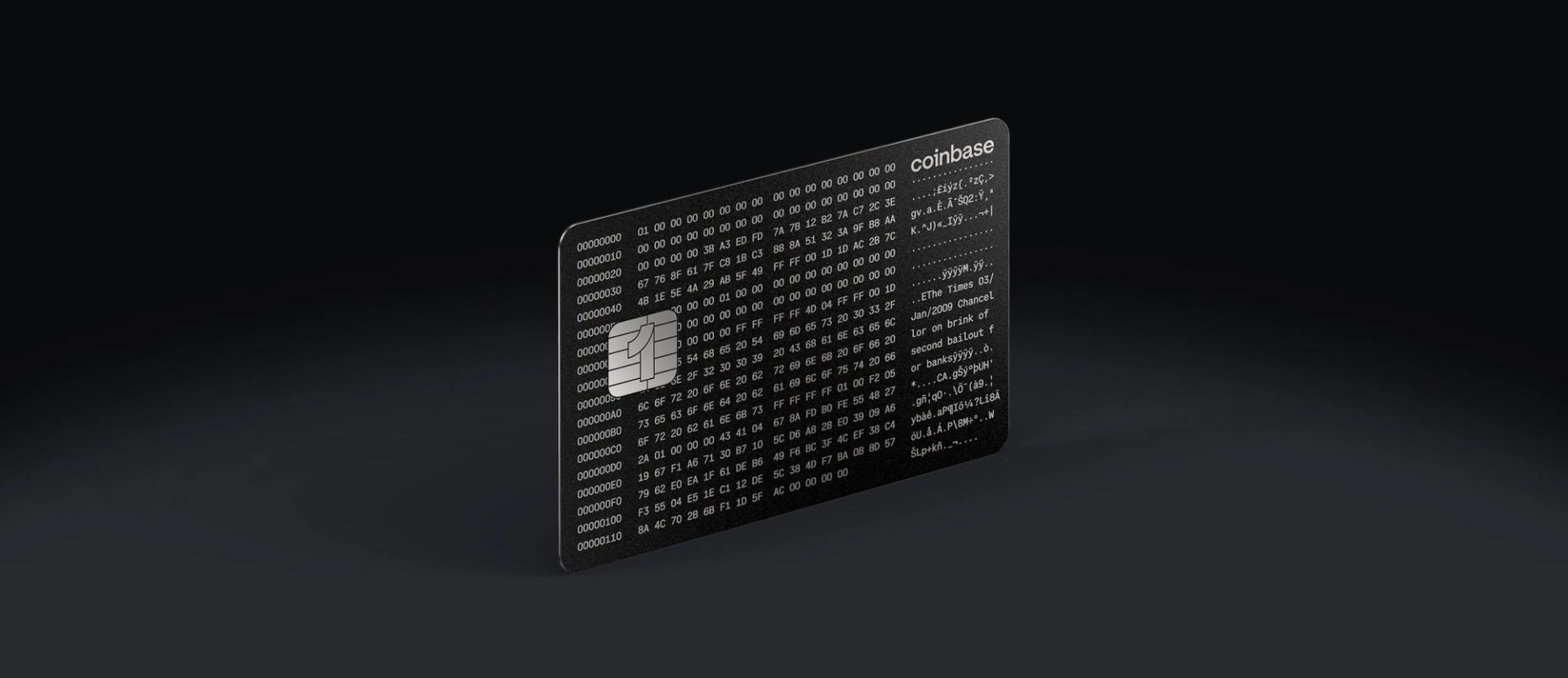
Coinbase is preparing to launch a new American Express credit card in the US this fall, and everything about it, from the design to the rewards, seems designed for bitcoin enthusiasts.
A card built around the history of bitcoin’s origin
Unlike most crypto-linked cards, Coinbase’s upcoming product isn’t just about perks, it’s about symbolism.
The card is engraved with data from the Genesis Block, the first block created on the Bitcoin network by pseudonymous inventor Satoshi Nakamoto on January 3, 2009. That single block launched the Bitcoin blockchain and ushered in an entirely new financial system.
The inclusion of this data is more than a design choice: it is a direct reference to Bitcoin’s founding moment. The hexadecimal code printed on the card is part of the raw data from that first block.
For non-technical readers, hexadecimal (or “hexadecimal”) is simply a base-16 numbering system used in computing. It is the digital language in which the original history of Bitcoin was written and is now literally etched into a physical financial product.
Embedded in that block was a now-famous message taken from a Times newspaper headline published the same day: “Chancellor on brink of second bailout for banks.”
Nakamoto included it as a timestamp and statement of purpose: a critique of central bank money creation and the failures of the traditional financial system during the 2008 crisis. It has since become a rallying cry for Bitcoin supporters who see the cryptocurrency as an antidote to centralized monetary power.
Even the name of the card, Coinbase, is infused with Bitcoin DNA. In blockchain terminology, a “coinbase transaction” is the first transaction in each new block, through which new bitcoins are created and awarded to miners.
It’s a fundamental part of how the network works, and by adopting the term, Coinbase ties its brand directly to Bitcoin’s most essential function: the creation of new money without a central authority.
Together, these design choices are meant to resonate with a specific audience: those who value Bitcoin not just as an asset, but as a philosophy, based on financial sovereignty, resistance to censorship, and distrust of legacy banking systems.
Characteristics, implementation plans and market context.
The Coinbase One Amex card will be available exclusively to subscribers of Coinbase One, the company’s paid membership program. Eligible cardholders will be able to earn up to 4% back in bitcoin on purchases, with rewards increasing based on the assets they have on Coinbase.
The card carries no foreign transaction fees and can be redeemed using a linked bank account or cryptocurrency held on the platform. Cardholders will also gain access to standard American Express benefits, including exclusive offers and events.
Coinbase says bitcoin rewards earned through spending will not appear on 1099 tax forms, although taxes may apply if those rewards are later sold.
While Coinbase emphasizes bitcoin’s heritage in its marketing, crypto rewards cards are not new.
Gemini, for example, launched a credit card in 2023 that offers up to 3% cryptocurrency cash back on purchases and supports a variety of digital assets, from bitcoin and ether to stablecoins.
The difference is in positioning: Gemini markets its product as a convenient spending tool to earn crypto rewards, while Coinbase is framing its Amex card as something more symbolic: a way to align everyday financial activity with the founding spirit of Bitcoin.
That distinction might matter. For users who simply want exposure to multiple cryptocurrencies, existing cards may continue to be more attractive. But for those who see themselves as part of the Bitcoin story, or want to be, Coinbase is betting that ideology and identity will be as powerful a draw as payback percentages.



